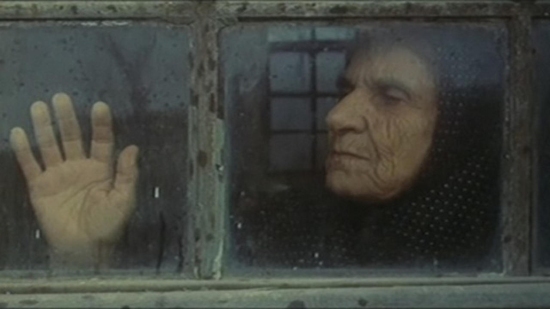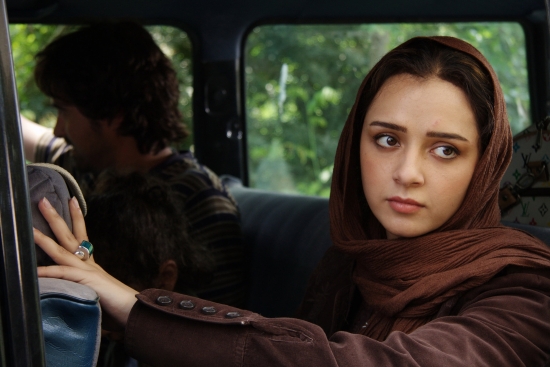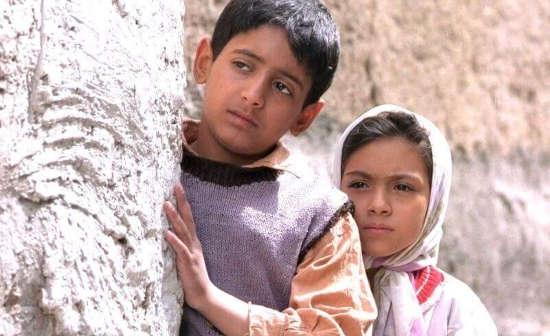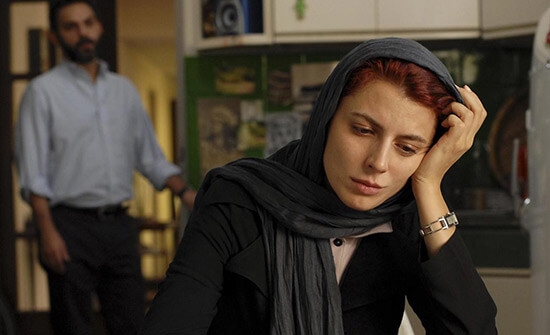by Alireza Hatamvand
The story of Iranian cinema is a hundred-years-old, and which has followed a more challenging path compared to many other countries. Low budgets and severe censorship are among the problems that have never let go of Iranian cinema.
However, Iranian filmmakers have not surrendered and have always been in search of a way to present their art despite all the problems standing in the way. In the face of low budgets, they have turned to simplicity and unpretentiousness, and instead of films with massive production values, they have focused on simple but profound human issues. This is why Iranian cinema is successful in portraying humanity.
Of course, this does not mean that Iranian cinema is sterile in terms of cinematic innovation and formal aspects. Certainly, the thematic aspects of Iranian cinema outweigh its formal elements, but there have also been many times when Iranian directors have created formalistic works with their cinematic creativity.
Also, due to the struggle with severe censorship, Iranian filmmakers usually convey their message through allegories and metaphors, or even speak more directly when necessary and have to live with the consequences.
For these reasons, Iranian cinema is a unique kind in world cinema, with well-known critics and prestigious international festivals regularly praising it.
Among the films that have emerged from Iranian cinema and shone on the international stage, perhaps A Separation directed by Asghar Farhadi, which won the Academy Award for Best International Film, is the most well-known. But Iranian cinema is not limited to just one film and one director.
In this article, 10 important films from Iranian cinema are discussed. An attempt has been made to cover various aspects of Iranian cinema.

10. No Date, No Signature (2017)
Directed by Vahid Jalilvand, No Date, No Signature is one of the most successful productions of Iranian cinema in the past 10 years. Since Iranian cinema in recent years has been mostly engaged with social dramas, this film can be seen as a good representative of this trend.
The story is about a doctor working in a forensic medical center who crashes into a motorcycle carrying a family, and this incident causes problems for him. Social, human, and ethical issue are blended well in this film.
The film was screened in the Orizzonti section of the Venice Film Festival and won the Best Director award for Vahid Jalilvand. It was also Iran’s entry for the 2019 Oscars, although it did not make the final shortlist. If you enjoy this film, you might also want to check out the director’s latest film Beyond the Wall, which was not permitted to be screened in Iran.

- No Bears (2022)
Only four directors in the history of cinema have managed to win the top awards at Cannes, Venice, and Berlin: Henri-Georges Clouzot, Michelangelo Antonioni, Robert Altman, and Jafar Panahi. Of course, Jafar Panahi is someone defined more by his perseverance and defiance than by his awards.
From the very beginning, he is someone who entered cinema with social concerns and chose a language that was sharper than his peers in terms of social criticism. His early films, such as The Circle and even later, Crimson Gold, both faced problems and restrictions in screening in Iran, and eventually his political actions led to a work ban, a travel ban, and even imprisonment, which led to widespread support from prominent filmmakers around the world. But he never gave up and continued making films by any means and creativity that he could, with many of those films gaining acclaim internationally.
No Bears is one of those films from his banned period, telling a story centered on a somehow fictionalised version of himself who is residing in a border village and remotely directing a film in Turkey.
This film, in addition to its social critique, has a distinct form and is reminiscent of the works of his spiritual mentor, Abbas Kiarostami. With this film, Panahi won the Special Jury Prize at the Venice Film Festival. Other notable works include The White Balloon, The Circle, Crimson Gold, Taxi Tehran, Three Faces, and A Simple Accident.

- Still Life (1974)
Sohrab Shahid-Saless, the director of this film, is considered one of the pioneers of the first wave of Iranian New Cinema; a movement that included two main branches – modern and abstract films, and commercial ones. Sohrab Shahid-Saless was among the most prominent figures of the first branch.
Still Life tells the story of an old railroad crossing guard who has been living with his wife near the train tracks for over 30 years. This film, which has a very slow rhythm and uses non-professional actors, focuses more on reality and closeness to human beings than on story. In fact, it can hardly be considered to have a plot. Undoubtedly, this deconstruction of plot is one of Shahid-Saless’s contributions to Iranian cinema. Moreover, the influence of renowned directors like Robert Bresson and Yasujirō Ozu on his work is clearly visible.
This film won the Silver Bear at the Berlin Film Festival, which was the first major international award in the history of Iranian cinema at an A-list festival. A Simple Event is another important work by this director.

- Fish and Cat (2013)
This film is considered one of the greatest formal achievements in Iranian cinema. More important than the story and its subplots is its narrative form. This 134-minute film was shot entirely in a single take! While there are successful examples of this technique in film history, such as Alexander Sokurov’s Russian Ark or Hitchcock’s Rope, Shahram Mokri takes it even further by adding time repetition or as he puts it, “creating perspective in time” to the structure, producing something that may be considered unique even in world cinema.
Shahram Mokri is one of the young and creative Iranian directors who, from the very beginning of his professional career, has shown a formalist approach to cinema and a desire to take completely new paths.
Fish and Cat won an award in the Orizzonti section of the Venice Film Festival. If you enjoyed this film, Careless Crime by the same director is also recommended.

- About Elly (2009)
Asghar Farhadi is one of only six directors in the history of world cinema to have won the Academy Award for Best International Feature Film more than once. Although About Elly is not one of these two films, it is considered a significant turning point in his career. Because, despite Farhadi’s many years of activity in Iranian cinema, it was this film that established his place in Iranian cinema and became a role model for Iranian directors.
The story revolves around a group of friends who go on a vacation and take along Elly, a kindergarten teacher.
This film is realistic and deals more than anything with the relationship and effects of humans on each other. The strength of Farhadi’s cinema is his precise scripts. The calculated details in his films make them worthy of watching multiple times.
About Elly was successful both domestically and internationally. It earned praise from many critics and won the Silver Bear at the Berlin Film Festival.

- Children of Heaven (1997)
One subgenre of Iranian social drama is made up of films centered around stories of children and adolescents. Many prominent Iranian directors have made successful films about children, and among them, Children of Heaven by Majid Majidi is one of the most successful.
This film tells the story of a poor family whose son and daughter share a single pair of shoes, taking turns to go to school. Children of Heaven is one of those simple Iranian films that despite its simplicity, contains deeply emotional moments. Majid Majidi’s style somewhat recalls Italian neorealism and is sometimes compared to the works of Vittorio De Sica.
This was the first Iranian film to make it to the final list of Oscar nominees for Best International Feature, although it did not win, losing to Roberto Benigni’s Life is Beautiful. Other notable films by this director include The Color of Paradise and The Song of Sparrows.

- The House is Black (1962)
In the early 1960s, at a time when Iranian cinema had not yet fully matured and its productions lacked the quality to capture international attention, the well-known Iranian poet Forough Farrokhzad created a poetic documentary that is now regarded as one of the greatest in the history of documentary filmmaking.
In this film, Farrokhzad turns her lens on a leper colony — a place where individuals suffering from leprosy are housed and treated, forming what is essentially a small city of lepers.
The documentary opens by stating that its purpose is to bring greater attention to these patients. To do so, Farrokhzad willingly faced the risk of infection, choosing to live among the lepers and document their lives from an intimate distance.
Yet the significance of this work goes beyond the extraordinary nature of its production. What further elevates the film is its lyrical editing — seamlessly linking fragmented shots into a coherent, artistic narrative — as well as the poet’s eloquent and heartfelt narration, which deepens the film’s emotional and aesthetic impact.

- Taste of Cherry (1997)
Jean-Luc Godard once said something astonishing about Abbas Kiarostami: “Cinema begins with Griffith and ends with Abbas Kiarostami.”
Kiarostami remains one of the most original directors in world cinema and the greatest director in the history of Iranian cinema.
Like many Iranian directors, he has a tendency toward simplicity. But the form he chooses for his works clearly sets him apart. He is exceptional in working with non-actors, and this technique creates authentic and believable moments in his works.
Taste of Cherry has a strange yet simple story. An intellectual man has decided to commit suicide and is now looking to hire someone to bury his body after his death. His journey in a car with various individuals produces extraordinary moments and dialogue exchanges. Most of the film takes place inside a car, alongside roads — a recurring motif in the works of this great filmmaker.
In the midst of the golden years of world cinema in the 1990s, Taste of Cherry brought the Palme d’Or from Cannes to Iranian cinema — an award that was not repeated until this very year by Jafar Panahi.

- A Separation (2011)
If About Elly is a turning point in Asghar Farhadi’s career, A Separation is his high point. A Separation tells the story of a man and a woman who are on the verge of divorce due to a disagreement over where to live, but they become involved in a more layered and serious situation.
The script is precise and detailed. Farhadi cleverly borrows some features of the mystery and crime genre and blends them with his realistic drama. The characters are also complex and unique. The dialogue exchanges are regarded as some of the most enduring in Iranian cinema.
A Separation saw Iran win the Oscar for Best International Film for the first time. It also won the Golden Globe for Best Foreign Language Film and the Berlin Golden Bear. With this film, Farhadi not only became the most influential director of this generation of Iranian cinema, but also gained international recognition. Just 5 years later, he won the Oscar for Best International Feature Film again with The Salesman. Other important films in Farhadi’s career include Fireworks Wednesday, The Past, and A Hero.

- Close-Up (1990)
And the list ends with a film unlike anything else in the history of cinema.
In addition to making narrative films, Kiarostami is also skilled in documentary filmmaking and has created several lasting documentaries. Interestingly, he brings the documentary style into his narrative cinema as well. It’s rare to find a film by Kiarostami that doesn’t contain elements of raw reality. But Close-Up is the ultimate fusion of documentary and fiction, as it precisely moves along the border between the two.
The story is entirely real and revolves around a legal case in which a man impersonates the Iranian director Mohsen Makhmalbaf. The people in this film are the actual individuals involved in that case, but the difference is that a long time has passed since the events occurred. Now, Kiarostami gathers them together and reconstructs the reality with the same people involved!
This recreation of reality and placing the accused and the plaintiffs under the same roof again creates a reality even sharper and more tangible than the original. The viewer constantly finds themselves questioning what is real and what is fictional.
If you enjoy Close-Up, you will probably also like The Koker Trilogy and The Wind Will Carry Us. But Close-Up remains the pinnacle of Kiarostami’s cinema — a film that ranked 17th in Sight & Sound’s most recent poll of the greatest films in cinema history.
This list introduces 10 films by 8 directors. These are the prime examples of Iranian cinema, but the richness of this cinema does not end here. If you find these films and Iranian cinema appealing, you might also enjoy works by other directors such as Bahram Beyzai, Dariush Mehrjui, Nasser Taghvai, Amir Naderi, among other greats of Iranian cinema.





